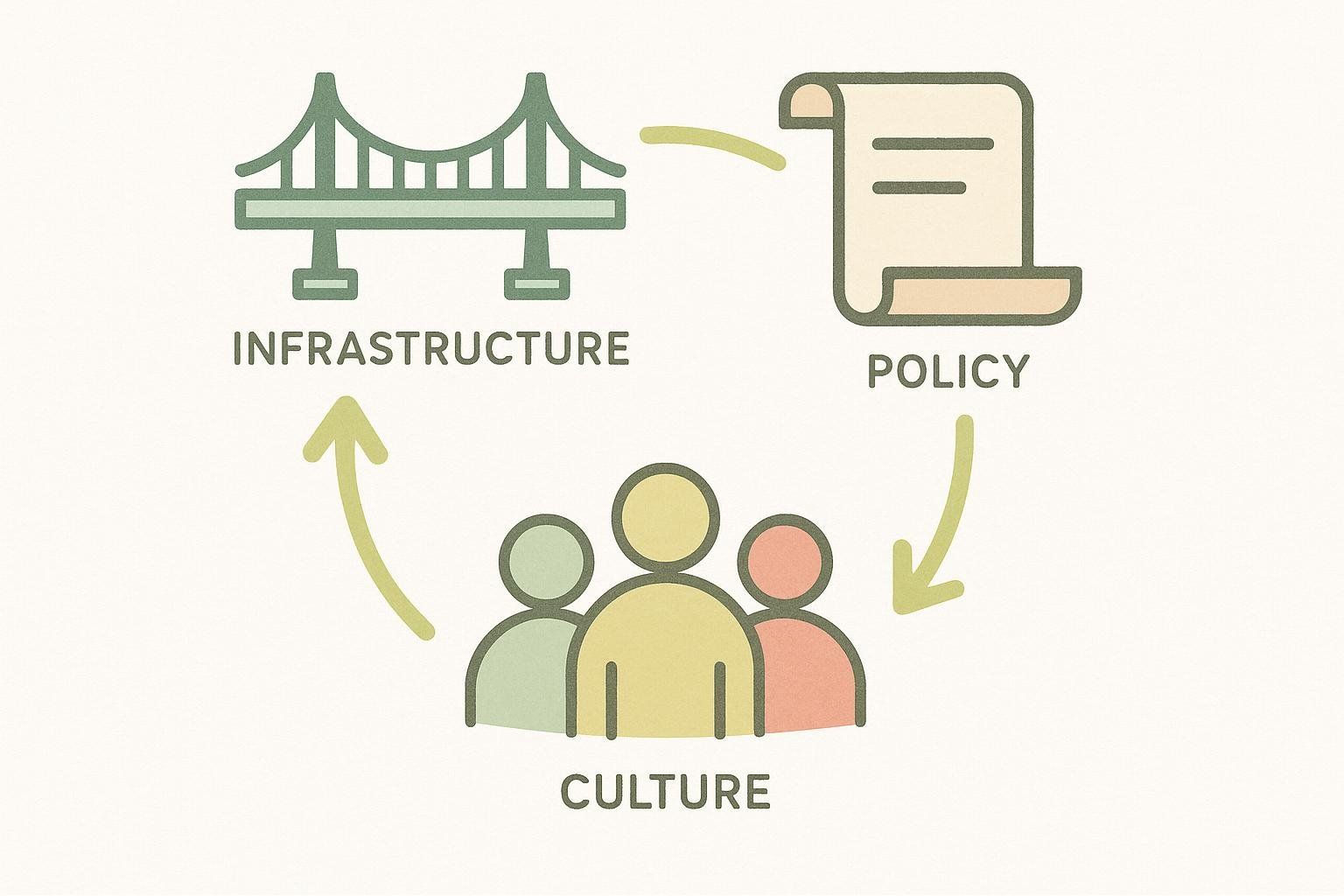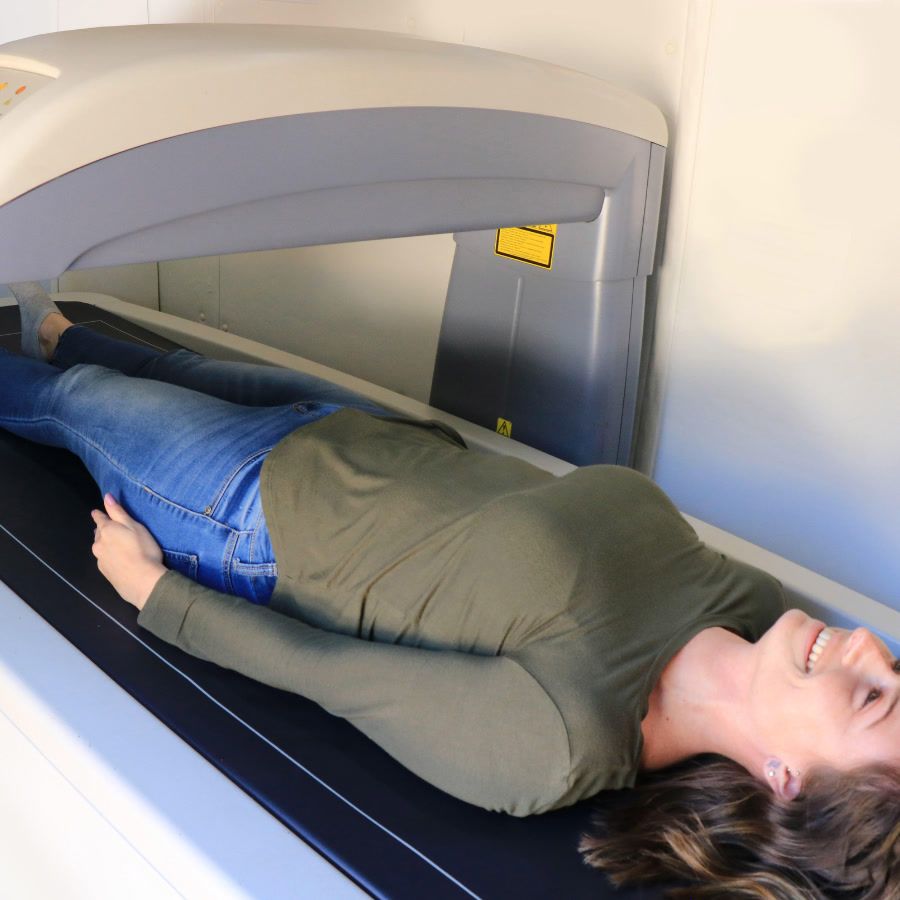Top 20 Fittest Cities in America - 2024 Rankings

Top 20 Fittest Cities in America (2024 ACSM Index)
Looking for the fittest cities in America? Each year the American College of Sports Medicine (ACSM) crunches data from 33 evidence-based indicators spanning health behaviors, chronic health outcomes, the built environment, policy & funding, and broader community characteristics.
The latest 2024 ACSM American Fitness Index once again crowns Arlington, VA the nation’s healthiest, most physically active community—for the seventh straight year (2024 ACSM American Fitness Index rankings).
“The Fitness Index is a powerful tool that can help communities address the physical, behavioral, and social drivers of health,” said Shantanu Agrawal, M.D., chief health officer at Elevance Health, the ACSM report’s presenting partner.
Below, we unpack the full top-20 list and spotlight the policies and amenities that separate the leaders from the laggards. First, though, let’s see how BodySpec’s five core service regions stack up.
How do BodySpec’s service cities compare?
What the numbers mean for your metabolic health

• Park access drives movement. San Francisco and Seattle’s near-universal park proximity goes hand-in-hand with lower obesity rates (< 25 %) (ACSM 2024 Index).
• Policy matters. Cities with lower per-capita park spending—such as Dallas and Austin—often post higher obesity and chronic-disease prevalence than higher-spending metros like Seattle ($321 per resident) (ACSM 2024 press release).
• DEXA provides personal insights. While city rankings offer a broad view, routine DEXA scans give you a precise, individual fitness baseline—whatever your ZIP code.
Why the Index links infrastructure to metabolic outcomes
ACSM’s indicators correlate strongly with health markers:
- Lower obesity prevalence. Top-10 metros average 23 % adult obesity vs. 34 % in bottom-quartile cities (ACSM 2024 Index).
- Fewer diabetes cases. High park-access cities log up to 20 % fewer new diabetes diagnoses per 100,000 residents (ACSM 2024 Index).
- Better visceral-fat trends. An internal review of 10,000 BodySpec scans found clients in top-ranked metros average 0.8 lb less visceral fat than peers in lower-ranked regions (internal BodySpec data, 2024).
Built environments that make movement unavoidable—corner parks, protected bike lanes, reliable transit—tend to translate into leaner body-composition profiles.

For a deeper dive into these nuances, learn more about why BMI fails to measure visceral fat.
Methodology in a nutshell
| Indicator Bucket | Sample Metrics |
|---|---|
| Health Behaviors | Exercise frequency, guideline adherence, fruit & veggie intake, sleep, smoking |
| Chronic Health Outcomes | Obesity, diabetes, heart disease, hypertension, asthma |
| Built Environment | Walk & Bike Scores, park acreage, rec facilities, pedestrian safety |
| Policy & Funding | Park spending per capita, Complete Streets policy, food-security initiatives |
| Community Characteristics | Air quality, transit use, active commuting |
Scores are weighted, summed, and scaled to 100. Full details live on the ACSM Fitness Index methodology page.
2024 Top-20 Fittest Cities in America
| Rank | City | Score |
|---|---|---|
| 1 | Arlington, VA | 85.6 |
| 2 | Washington, DC | 77.4 |
| 3 | Seattle, WA | 74.7 |
| 4 | San Francisco, CA | 73.5 |
| 5 | Madison, WI | 72.3 |
| 6 | Minneapolis, MN | 71.8 |
| 7 | Denver, CO | 70.6 |
| 8 | Atlanta, GA | 68.9 |
| 9 | Irvine, CA | 67.4 |
| 10 | St. Paul, MN | 66.8 |
| 11 | Portland, OR | 65.9 |
| 12 | San Diego, CA | 64.2 |
| 13 | Miami, FL | 63.8 |
| 14 | Chicago, IL | 62.7 |
| 15 | Austin, TX | 61.9 |
| 16 | Sacramento, CA | 61.2 |
| 17 | Boise, ID | 60.5 |
| 18 | Pittsburgh, PA | 59.8 |
| 19 | Lexington, KY | 58.9 |
| 20 | Buffalo, NY | 58.3 |
Source: ACSM 2024 / Elevance Health Foundation Fitness Index
Regional highlights
West
Seven western metros make the list, buoyed by bike-friendly infrastructure and abundant green space. Seattle’s park spending ranks 3rd nationally (ACSM 2024 Index), while San Francisco’s Walk Score of 88 tops the country (ACSM 2024 Index).
Midwest

Madison, Minneapolis, and St. Paul prove cold weather isn’t a deal-breaker. Extensive trail systems and city–university partnerships keep active-commute rates high even in winter (ACSM 2024 Index).
South
Arlington and Washington, DC anchor the region, and Atlanta’s BeltLine helped it crack the top 10. Miami surged 26 spots to No. 13 after adding bike lanes and launching the county-wide “Fit Miami” campaign (ACSM 2024 press release).
Northeast
Buffalo debuts in the top 20 thanks to waterfront-trail upgrades, while Pittsburgh’s decade-long climb showcases the payoff from Complete Streets and smoke-free policies (ACSM 2024 Index).
What separates the winners?

- Parks on every block – 94 % of residents in top cities live within a 10-minute walk of a park vs. 55 % in the lowest-ranked cities (ACSM 2024 Index).
- Active-commute lanes – Protected bike lanes and robust transit networks correlate with higher physical-activity scores (ACSM 2024 Index).
- Policy dollars – Arlington invests $346 per resident in parks, roughly triple the national median (ACSM 2024 Index).
- Community culture – Festivals, race series, and workplace challenges keep fitness visible (ACSM 2024 Index).

“City officials can use the Fitness Index as a baseline to measure progress and make data-driven decisions that improve residents’ health,” noted Stella Volpe, Ph.D., FACSM, President of ACSM.
City spotlights
Arlington, VA
- Exercise rate: 91 % of adults exercised in the past month—best nationwide (ACSM 2024 Index).
- Low smoking: 4.8 % of residents smoke (ACSM 2024 Index).
- Park access: Nearly every household is within a 10-minute walk of a park (ACSM 2024 Index).
Washington, DC
- Produce power: 37.9 % of residents eat ≥ 2 fruits daily (ACSM 2024 Index).
- Bike boom: Move DC added 20 miles of protected bike lanes in two years (MoveDC Policy J).
Seattle, WA
- Park spending: $321 per resident—3rd highest nationally (ACSM 2024 Index).
- Activity adherence: Residents meet aerobic guidelines at a rate 15 % above the city average (ACSM 2024 Index).
How to use these rankings
• Relocating for lifestyle? Compare park access, air quality, and cost-of-living data to pinpoint your best-fit community.
• City officials & planners: Benchmark against Arlington’s Complete Streets policy or Madison’s bike-share playbook, then explore ACSM’s City Comparison Tool for indicator-level gaps.
• Employer wellness leads: Many top-20 cities offer tax incentives for active-commute benefits. Leverage local culture—and our corporate wellness programs guide—to boost participation.
FAQs
Is the ACSM Fitness Index the definitive word on city health?
It’s the most comprehensive national benchmark, but it covers only the 100 largest metros—smaller active towns (think Boulder, CO) aren’t included.
How often are rankings updated?
Annually, typically in July.
Why did my city drop this year?
Rankings are relative—if peer cities improve faster, your city can slip even if its raw score stays flat.
Can a city request a deeper dive?
Yes. ACSM offers custom consulting and a self-serve City Comparison Tool.
Key takeaways

- Infrastructure + policy + culture create a virtuous cycle of physical activity.
- Investing in parks and safe streets pays long-term public-health dividends.
- Wherever you live, prioritize movement and monitor progress—BodySpec’s affordable DEXA scans make data-driven fitness achievable.
Ready to quantify your own fitness? Find a BodySpec scan near you and make data part of your healthy-city lifestyle.


